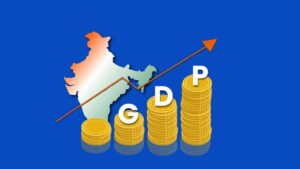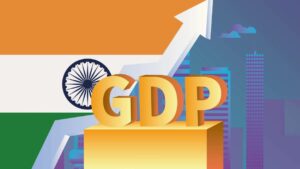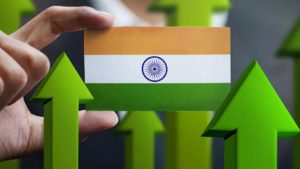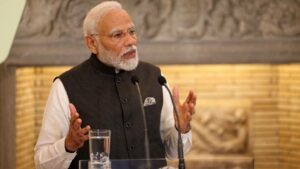The US at present is the world’s largest economy with a GDP of USD 25.5 trillion. It makes up for a quarter of the world’s GDP. China is the second largest economy with a GDP size of about USD 18 trillion, which is almost 17.9 per cent of the world GDP. Japan is a distant third with USD 4.2 trillion GDP, followed by Germany with USD 4 trillion GDP. India, with GDP size of USD 3.4 trillion, is the fifth largest economy in the world, after US, China, Japan, and Germany. By 2022, the size of the Indian GDP had already become larger than the GDP of the UK and also France. By 2030, India’s GDP is also forecast to surpass Germany. And this is a fact.
Deloitte says
“India’s GDP growth will be over 6.5 per cent next year as geopolitical uncertainties subside, and the global economy bounces back on a stronger growth path. India’s micro, small, or medium enterprises will be key in generating income, capabilities, capacities, and ecosystems needed for sustained growth in consumption and investment that is broad-based and comes from all sections of the economy. The MSME sector will also drive innovation and new opportunities in a cost-effective manner. It will drive job creation and entrepreneurship, especially for women in rural India. India will need at least 6.5 per cent growth every fiscal to become the world’s third largest economy by 2027, with its Gross Domestic Product crossing USD 5 trillion. The country needs 8-9 per cent economic growth to become a developed country by 2047.”
FICCI says
“After two years of rapid economic growth in 2021 and 2022, the Indian economy has continued to show sustained strong growth during the 2023 calendar year. India’s GDP is expected to grow 6.2-6.3 per cent in the fiscal year ending in March 2024, being the fastest-growing major economy this fiscal year. India is expected to hold ground on the back of good health of the financial sector, robust urban demand, uptick in private investment as a result of government’s front-loading of capex, pick up in real estate/construction sector and the forthcoming festive season.”
S&P Global says
“The digital transformation of India that is currently underway is expected to accelerate the growth of e-commerce, changing the retail consumer market landscape over the next decade. India is expected to continue to be one of the world’s fastest-growing economies over the next decade. India’s strong FDI inflows have been boosted by large inflows of investments from global technology MNCs such as Google and Facebook, as well as a strong upturn in foreign direct investment inflows from manufacturing firms. This will make India one of the most important long-term growth markets for multinationals in a wide range of industries, including manufacturing industries such as autos, electronics and chemicals to services industries such as banking, insurance, asset management, and information technology.”
Moody’s Investors Service says
Moody’s Investors Service has retained India’s economic growth forecast for 2023 at 6.7 per cent. It says strong domestic demand will likely sustain the growth in the near term. With exports remaining weak against an unfavourable global economic backdrop, Moody’s in its Global Macroeconomic Outlook 2024-25 said sustained domestic demand growth is propelling the economy. Moody’s said high-frequency indicators show that the economy’s strong June quarter momentum carried into July-September as well. Robust goods and services tax collections, surging auto sales, rising consumer optimism and double-digit credit growth suggest urban consumption demand will likely remain resilient amid the ongoing festive season. However, rural demand, which has shown nascent signs of improvement, remains vulnerable to uneven monsoons that could lower crop yields and farm income, Moody’s said.
“On supply side, expanding manufacturing and services PMIs and healthy core industries’ output growth add to evidence of solid economic momentum. With exports remaining weak amid an unfavourable global economic backdrop, strong domestic demand will likely sustain growth in the near term. Domestic demand dynamics beyond the festive season will depend on the trajectory of inflation and the lagged impact of the RBI’s monetary policy tightening,” it said.
What else is left to be said?




















